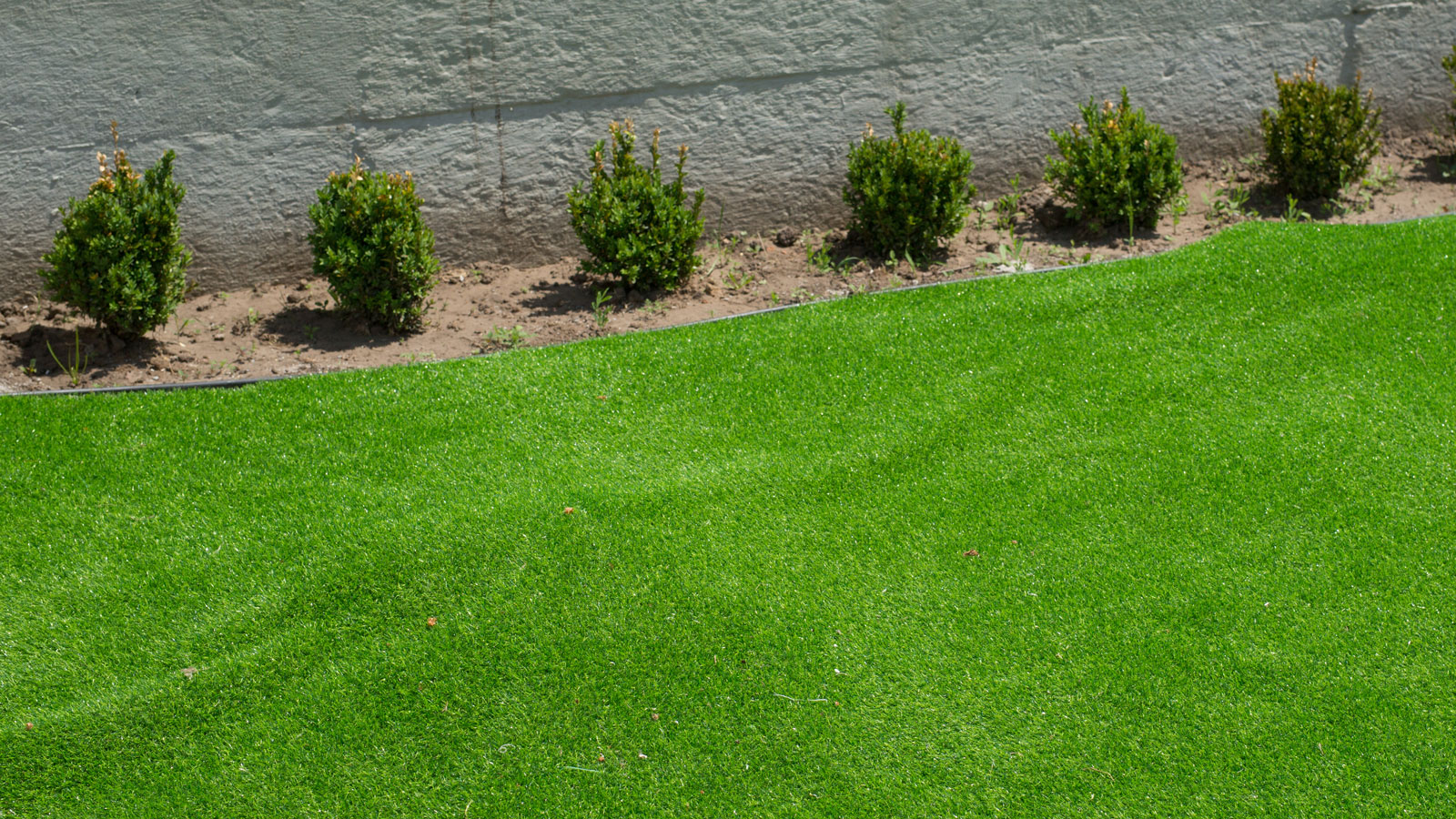Common Problems With Artificial Grass & How To Avoid Them
If you’ve added fake grass as a way to save time, be warned: you’ll run into problems with artificial grass if you haven’t made the right preparations. Here’s how to dodge lawn grief


For many people, one of the biggest problems with artificial grass is that it can’t compare with the real thing. It would be hard to find a homeowner who prefers the look and feel of artificial turf to a lush, green, growing lawn. But lush lawns take time, money, and effort. And some desolate landscapes are difficult to plant. Unrolling fake grass at least provides a quick fix to a dead stretch of property and requires little maintenance. Being able to lay an artificial lawn at least gives you the option of a patch of color.
But no fake turf lasts forever, and if a homeowner makes mistakes with the installation, there may be even more problems with artificial turf. If you want to avoid issues when laying artificial grass, read on. We’ll outline some of the most common problems.
Common Problems With Artificial Grass
Although synthetic turf can be a quick fix for making a landscape look better, it doesn’t come without its issues. It can be more expensive than you might think, and it can cause problems over the long term. While each yard is different, there are some common artificial grass problems that homeowners experience:
- Uneven surface: First, the installation is more difficult than it appears and can cost a lot more. While unrolling turf sounds as easy as unrolling a carpet, it is by no means the same. Preparing the land is just as important for fake grass as for installing a real lawn. If you don’t remove the existing turf, and dig up and level the ground, your artificial turf may be uneven and unstable, creating tripping hazards.
- Drainage issues: Drainage is one of the key problems with artificial grass, unless it is installed appropriately. This causes puddling that can attract insects, cause mold, and mildew. In addition, artificial turf collects debris like dead leaves, plus pet feces and urine can be an issue.
How to Avoid Common Artificial Grass Problems
Knowledge is power if you want to avoid mistakes when laying artificial grass. If you learn how to prepare your landscape for turf, you can minimize most of the issues. Be sure to schedule adequate time to complete each step of the process. Preparation is key to avoiding problems with turf:
- Make sure the terrain is flat, weed-free, and compacted. It’s necessary to dedicate time and effort to this preparation.
- Take out all vegetation, dig out the soil to 4in (10cm) and compact it using a plate compactor.
- Install several inches of crushed gravel or other infill on top.
- Check in with the slope of the land. The soil base must be firm and stable, but it also needs to slope.
- Build in a grade of one percent and choose an aggregate that allows drainage.
- Align the strips of turf carefully. They should be taut and well attached to avoid buckling.
How to Fix Problems With Artificial Turf
The best way to avoid problems with artificial grass is to install it carefully. Once you have issues, fixing them is more difficult. If you fail to prepare the landscape appropriately by leveling the area, removing vegetation and building in a slope, the resulting drainage problems may be serious. You’ll need to remove the turf and take care of the underlying issues to solve them.
If the problems you are experiencing involve loose or buckling turf, it may be a question of tacking down the rolls of turf. Secure each section by pulling it taut, then tacking it down with 6in galvanized nails every three to four inches.
Frequently Asked Questions
What Are the Negative Effects of Artificial Grass?
Artificial grass is expensive to install, requires significant maintenance, and has a relatively short lifespan. Even more important, it does not provide any of the ecological benefits of real grass.
While some synthetic grasses come in part from some renewable sources, a large part do not. And artificial turf does not support wildlife in soil or the health of the soil itself. Artificial turf heat problems must also be considered. Most artificial grass is largely made of plastic, and this can become uncomfortably hot in full sun.
Does Artificial Grass Cause Drainage Problems?
Artificial turf drainage problems are real issues. Water soaks through real grass, but drainage is not so easy with artificial grass. If you install it properly, water should be able to infiltrate the underlying soil. But improper installation, failure to include infill or failure to slope and compact the land can result in drainage problems.
Sign up for the Gardening Know How newsletter today and receive a free copy of our e-book "How to Grow Delicious Tomatoes".

Teo Spengler is a master gardener and a docent at the San Francisco Botanical Garden, where she hosts public tours. She has studied horticulture and written about nature, trees, plants, and gardening for more than two decades, following a career as an attorney and legal writer. Her extended family includes some 30 houseplants and hundreds of outdoor plants, including 250 trees, which are her main passion. Spengler currently splits her life between San Francisco and the French Basque Country, though she was raised in Alaska, giving her experience of gardening in a range of climates.